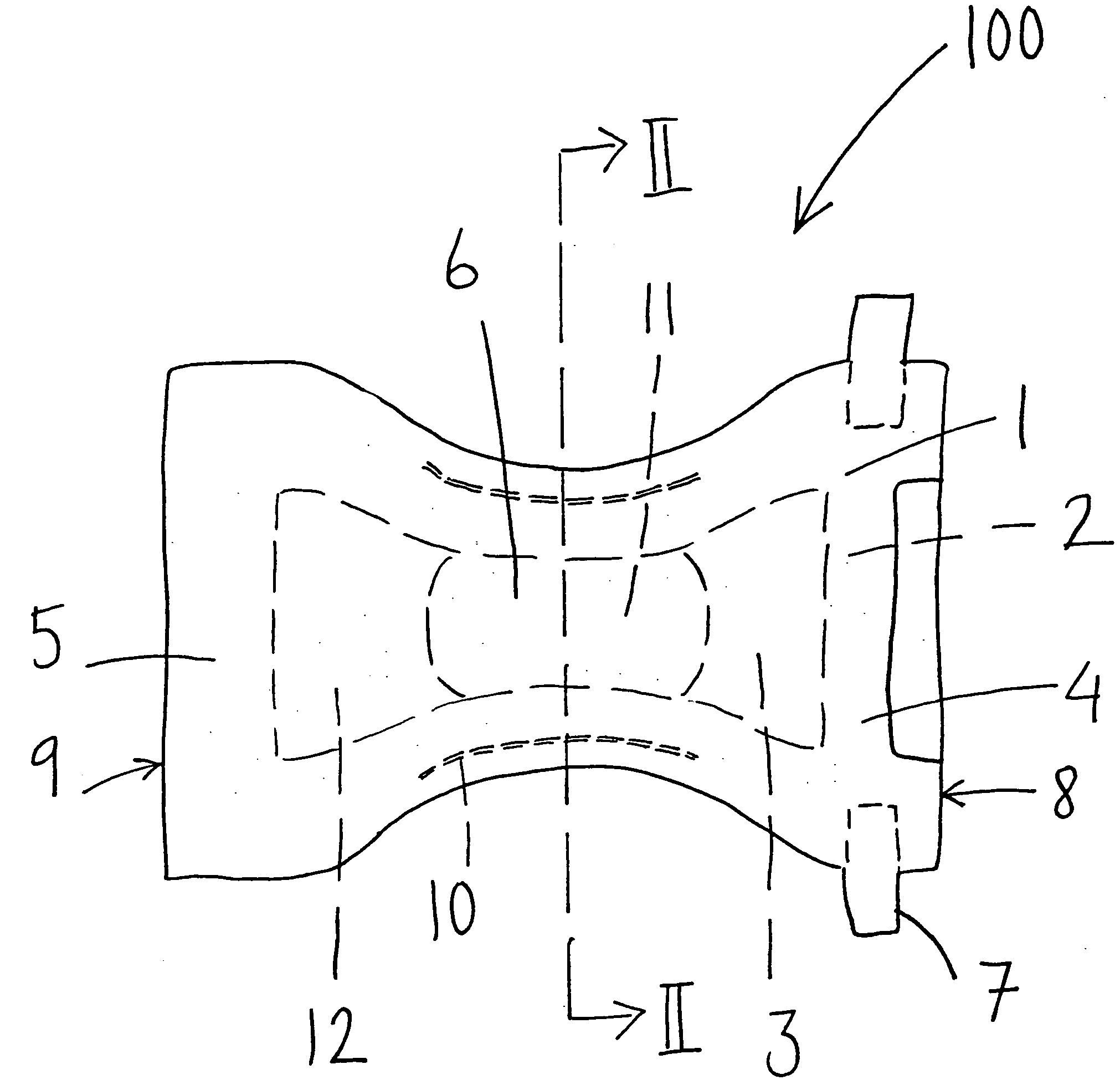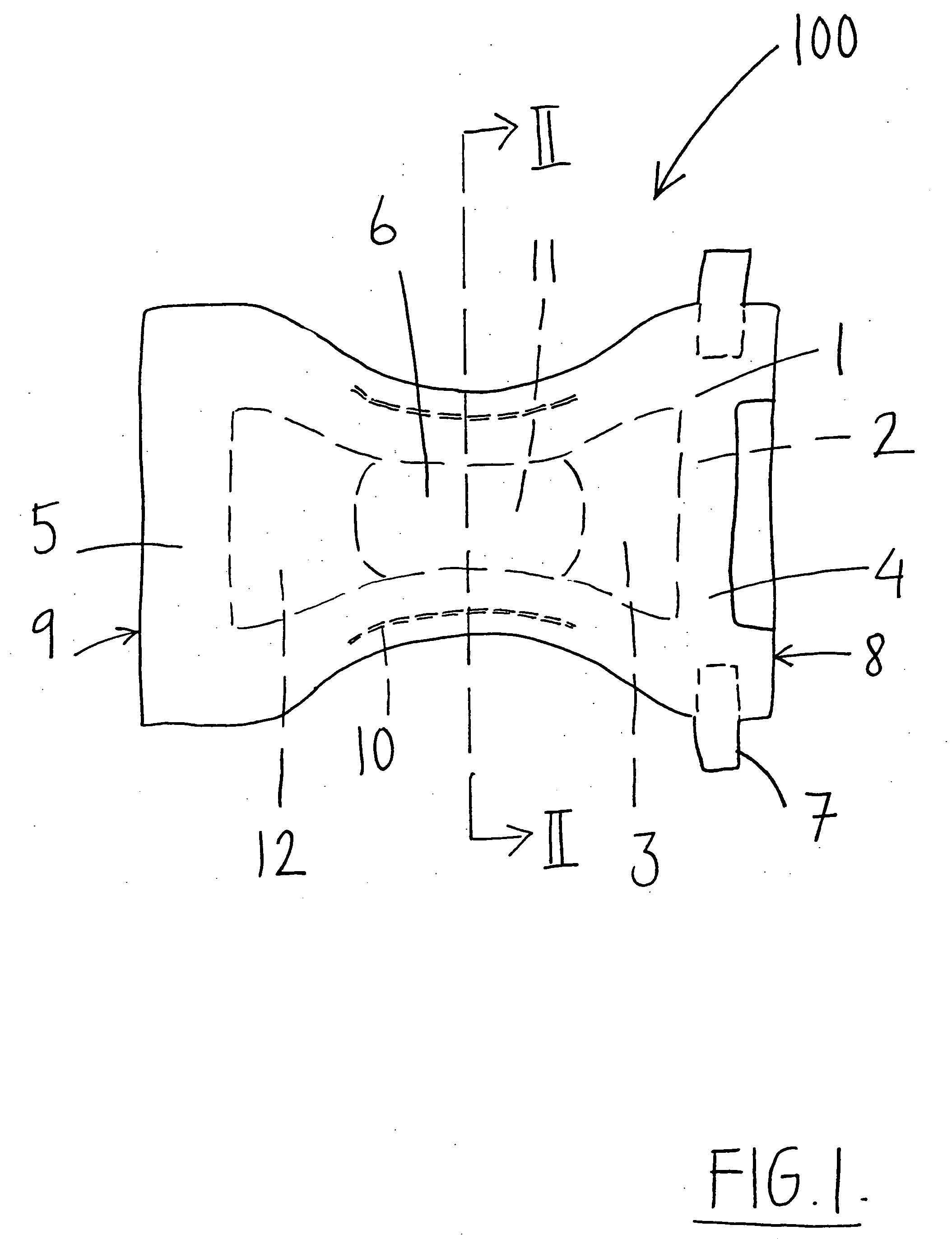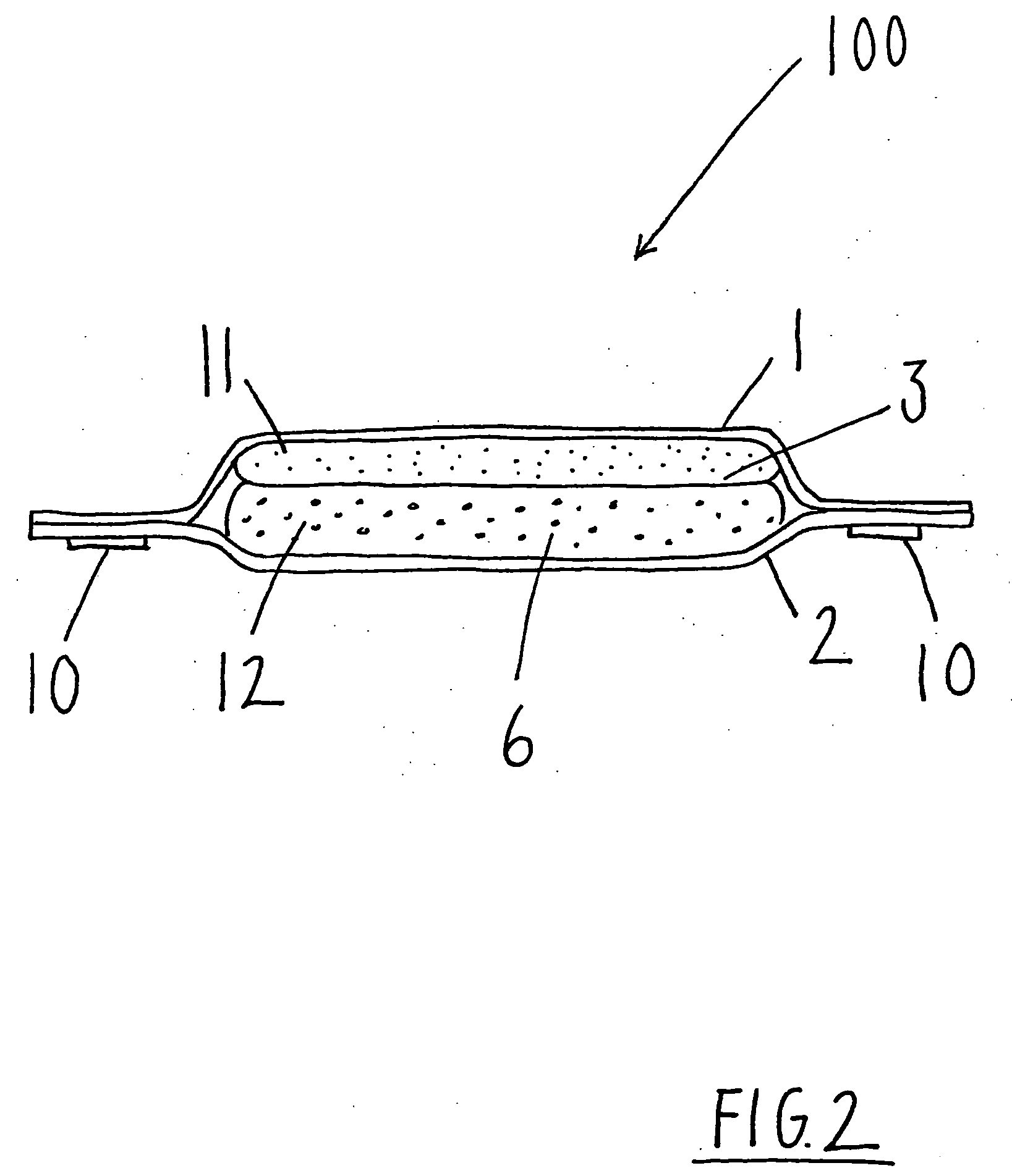Absorbent article comprising an absorbent structure
a technology of absorbent articles and absorbent materials, applied in the field of absorbent articles, can solve the problems of skin irritation, unpleasant odor, and several undesirable side effects, and achieve the effects of reducing the price per product, and reducing the overall absorption capacity
- Summary
- Abstract
- Description
- Claims
- Application Information
AI Technical Summary
Benefits of technology
Problems solved by technology
Method used
Image
Examples
example 1
Measurement of Absorption Rate in Superabsorbent Material
[0048] The absorption rate of three different polyacrylate-based superabsorbent materials was measured using the “Free swell rate” method. Two of the superabsorbent materials were manufactured by BASF and are called Hysorb C7110 and Hysorb B7160, respectively. The third superabsorbent material was manufactured by Dow and is called Drytech S230R. The pH value of the superabsorbent material called Hysorb C7110 is 4.5, the pH value of the superabsorbent material called Hysorb B7160 is 6.0, and the pH value of the superabsorbent material called Drytech S230R is 5.9. For measuring the pH of the superabsorbent materials, use was made of the EDANA method 400.1-99.
[0049] The absorption rate was measured in three different particle size ranges. This means that nine different measurements were performed.
[0050] The principle of Free swell rate measurement is to allow a superabsorbent material to absorb a given quantity of liquid. The ...
example 2
Measurement of pH in an Absorbent Structure
[0056] An absorbent structure with a diameter of roughly 50 mm was produced according to a slightly modified test specimen forming procedure according to SCAN C 33:80. Fluff pulp and superabsorbent material were weighed out, and a uniform mixture of fluff pulp and superabsorbent material was introduced into an air flow with a negative pressure of roughly 85 mbar and guided through a tube with a diameter of 5 cm provided with a metal net at the bottom on which a thin tissue had been placed. The mixture of fluff pulp and superabsorbent material accumulated on the tissue on the metal net and formed the absorbent structure. The absorbent structure was weighed and compressed to a bulk of between 6 and 12 cm3 / g. The absorbent structure tested had a total weight of 1 gram. The absorbent structure contained a partly neutralized superabsorbent material with a pH of 4.2. The fluff pulp was a chemithermomechanical cellulose pulp with a pH of 5.8. The...
PUM
 Login to View More
Login to View More Abstract
Description
Claims
Application Information
 Login to View More
Login to View More - R&D
- Intellectual Property
- Life Sciences
- Materials
- Tech Scout
- Unparalleled Data Quality
- Higher Quality Content
- 60% Fewer Hallucinations
Browse by: Latest US Patents, China's latest patents, Technical Efficacy Thesaurus, Application Domain, Technology Topic, Popular Technical Reports.
© 2025 PatSnap. All rights reserved.Legal|Privacy policy|Modern Slavery Act Transparency Statement|Sitemap|About US| Contact US: help@patsnap.com



